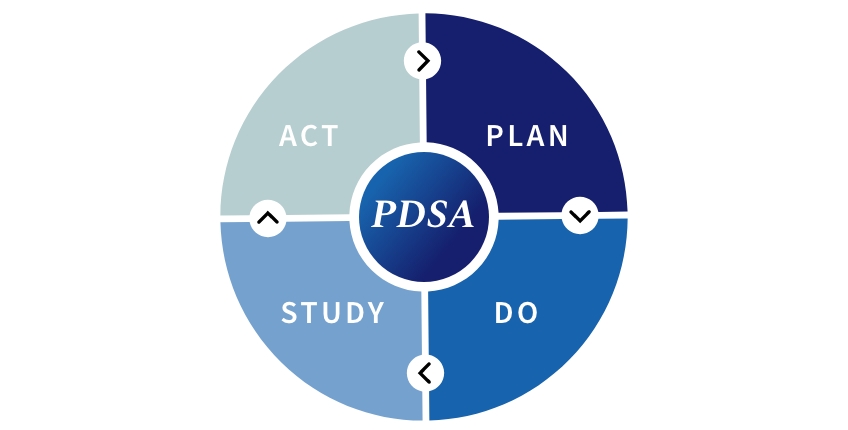Quality Improvement in Clinical Dentistry: Part 2
By Robert Winter on December 8, 2022 |
In the first part of this series on Dental Quality Assurance Using Plan, Do, Study, Act (PDSA), I discussed the importance of incorporating the scientific principles and tools used in other healthcare settings to improve the quality of clinical care and patient outcomes. I reviewed the need to clearly identify the problem, brainstorm any factors that may be contributing to poor outcomes, and develop a plan to make the desired change as part of the PDSA quality improvement model (Figure 1). In this article, you will learn how to implement the change(s) you identified and monitor your progress to ensure you overcome your clinical problem/challenge and avoid encountering it going forward.
Dental Quality Assurance Plan, Do, Study, Act (PDSA) Model: Step 2 – 4

Step 2: Do
The “Do” phase of the PDSA cycle is where you implement the process change(s) you have decided to apply and observe for an improvement or decline of results related to your desired outcome. You will collect the associated data (number of successes and number of failures) and include any associated facts, including the associated who, what, when, where, and how. You will then analyze what changed or what did not.
Step 3: Study
In the next phase, you begin to evaluate your findings. You want to review all the data you collected in the “Do” phase and compare it to the goals you established in the planning phase. You identify any deviations from the goal and analyze why the effect was not as planned.
You will want to specifically consider:
- Is there something you overlooked?
- Did everything go as planned, but the plan to eliminate the problem was incorrect or did not fully meet the goals and objectives?
- What did the weaknesses of your process change, and what do you need to modify to try and reach your original goal or outcome?
Step 4: Act
Based on your analysis of the data, you may find you have discovered the underlying cause of the quality issue and made the correct changes in your practice. If the goal was met, you need to decide how to sustain it.
Ways to do this include:
- Regular meetings with your clinical staff to be sure you remain on track.
- Post continued statistics/data so all involved in the process are informed and continue to be engaged in the process.
- Determine what changes or deviations will trigger an assessment or development of a new plan of attack.
- Adjust the plan and repeat the cycle to see if you can come closer to the desired clinical goals or outcomes.
- Monitor for internal or external changes that can affect the process. For example, did the materials your lab uses for the restorations change, or did the bonding system manufacturer change protocols you may have missed?
- If changes occur and goals are no longer being met, begin the cycle again.
- Continue to collect, monitor, and post the results of your dental quality assurance project so that everyone involved in the process can detect when there is a deviation or problem.
- If your goal was not met, it may be time to start the process all over again. Try approaching the problem from a different viewpoint or consider calling in someone who has more experience in quality improvement processes and can look at the problem with a fresh perspective.
Implementing a dental quality assurance system and using a tool like the PDSA model at your practice will help find the underlying cause of a problem you may have in your practice or for improving any clinical outcomes, you do not feel meet your desired standard. Doing regular quality checks around processes with areas for improvement will not only help you provide better clinical care for your patients, but will also improve your bottom line as you maximize productivity within your practice.
Robert Winter, D.D.S., is a member of Spear Resident Faculty.